Ch. 5 Body Position
1/10
There's no tags or description
Looks like no tags are added yet.
Name | Mastery | Learn | Test | Matching | Spaced |
|---|
No study sessions yet.
11 Terms
Knee-chest position
The patient is assisted into a kneeling position with the buttocks elevated. The head and chest are on the table, and the arms are extended above the head and flexed at the elbow. This position facilitates examination of the rectum.
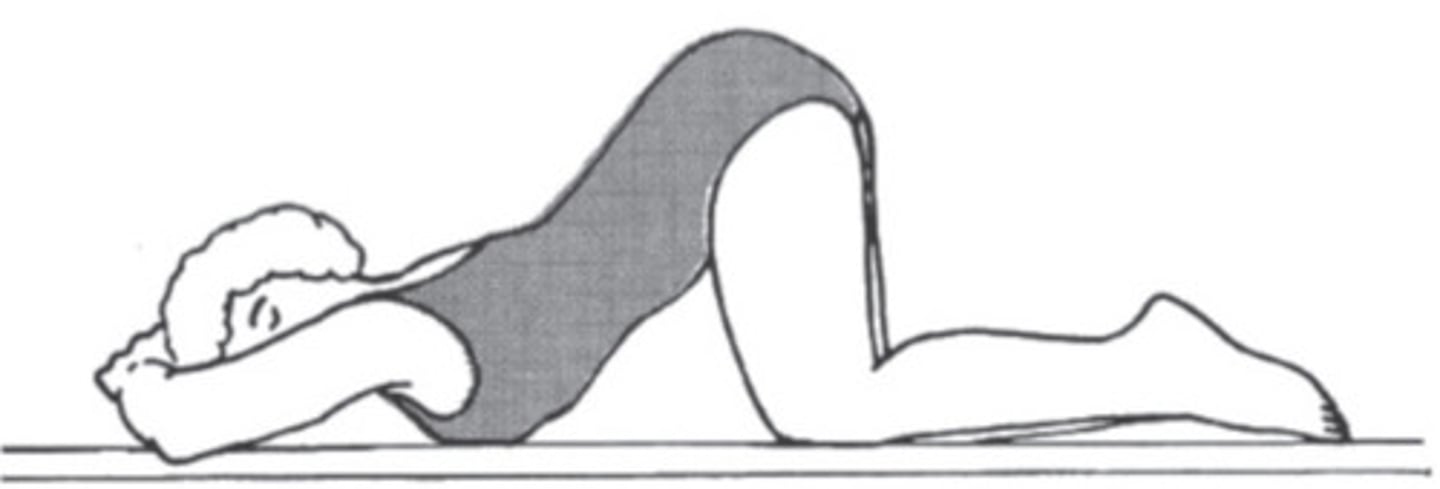
Lithotomy position
The patient is assisted into supine (lying on the back) position. The legs are sharply flexed at the knees, and the feet are placed in stirrups. This position is used for vaginal examination and the Papanicolaou (Pap) test.
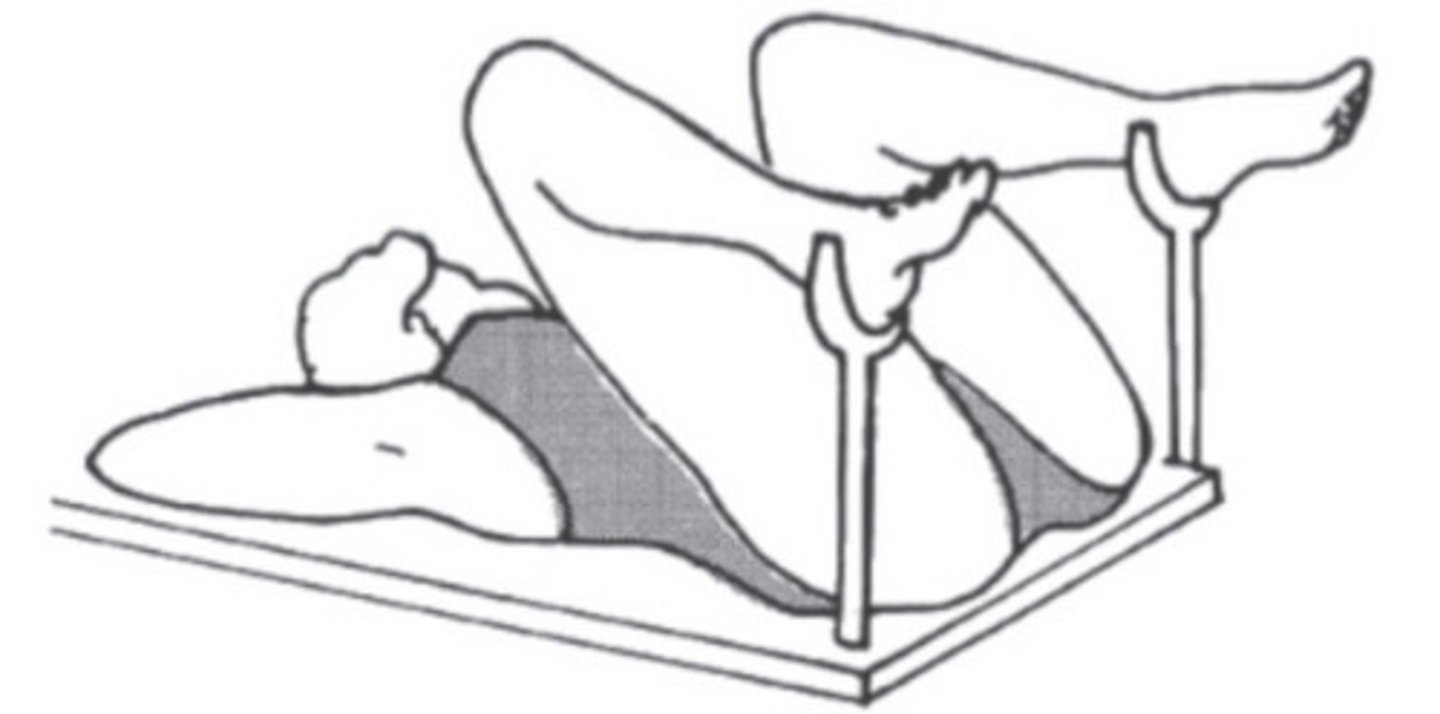
Dorsal recumbent position
The patient is assisted into a supine position. The legs are sharply flexed at the knees, and the feet are placed on the table. This position is used to examine the vagina and the rectum in a female patient and the rectum in a male patient.
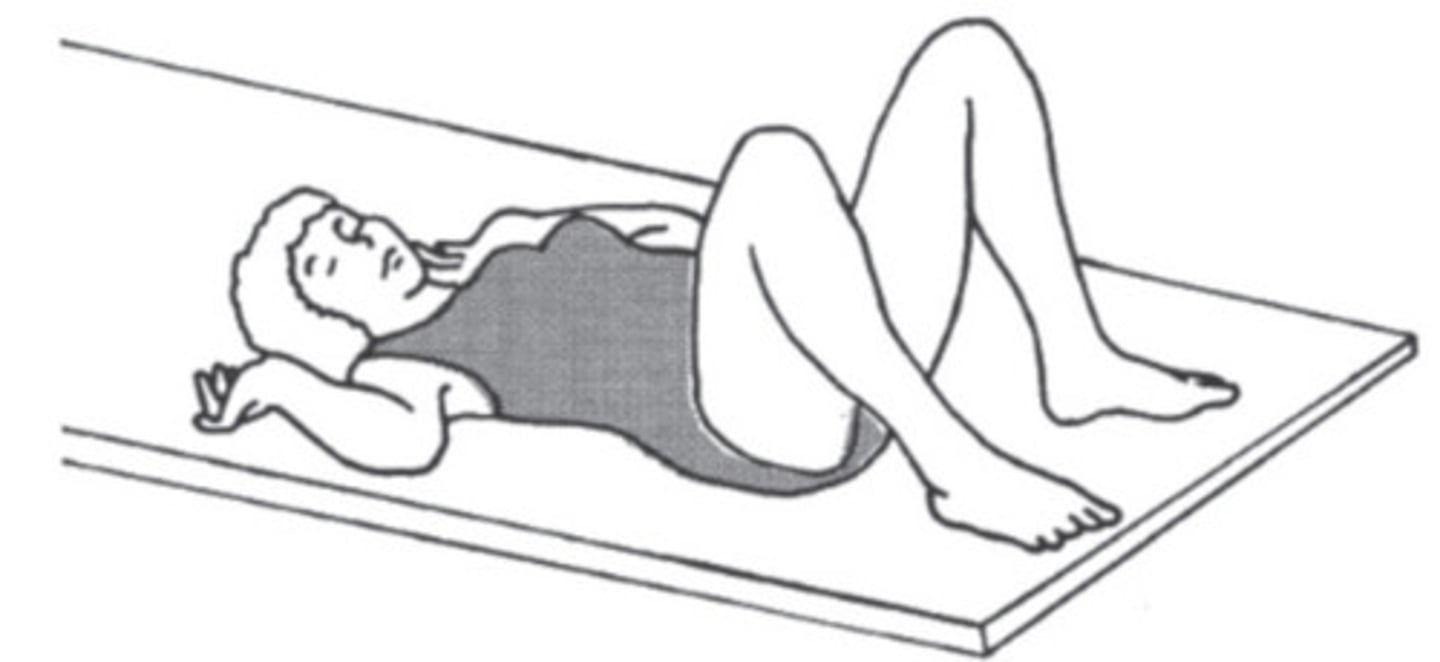
Sims position
lying on side in a semi-prone position with the knee drawn up toward the chest and the arm drawn behind parallel to the back
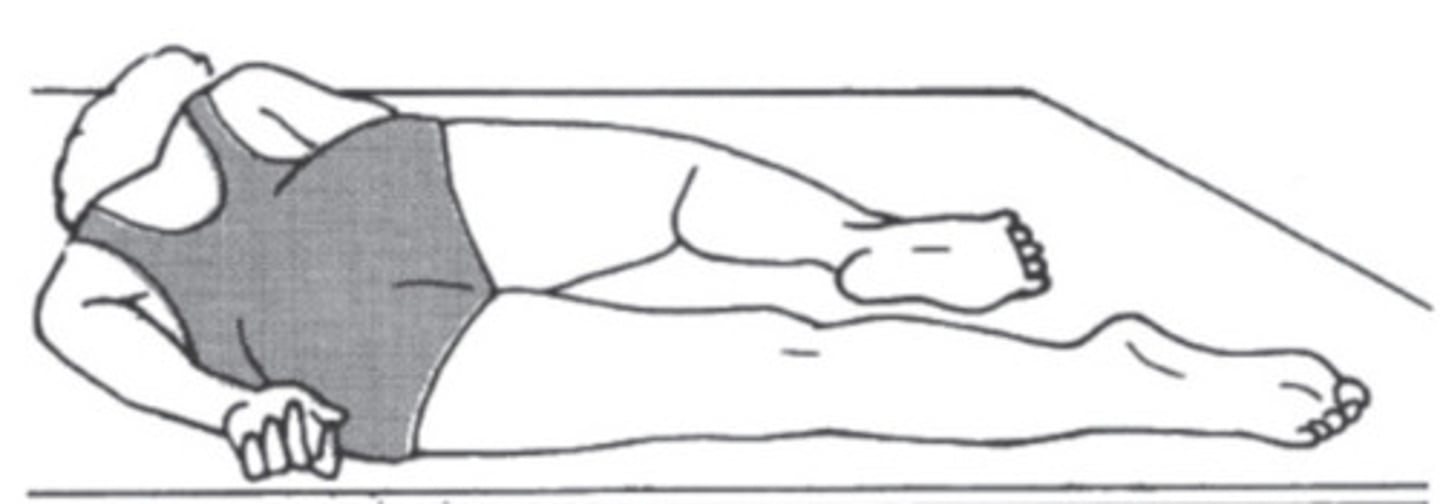
Prone position
The patient is assisted to lie flat on the abdomen with the head turned slightly to the side. The arms are extended above the head or alongside the body. Prone position is used to examine the back, spine, and lower extremities.

Fowler position
Head and torso raised between 45 and 60 degrees
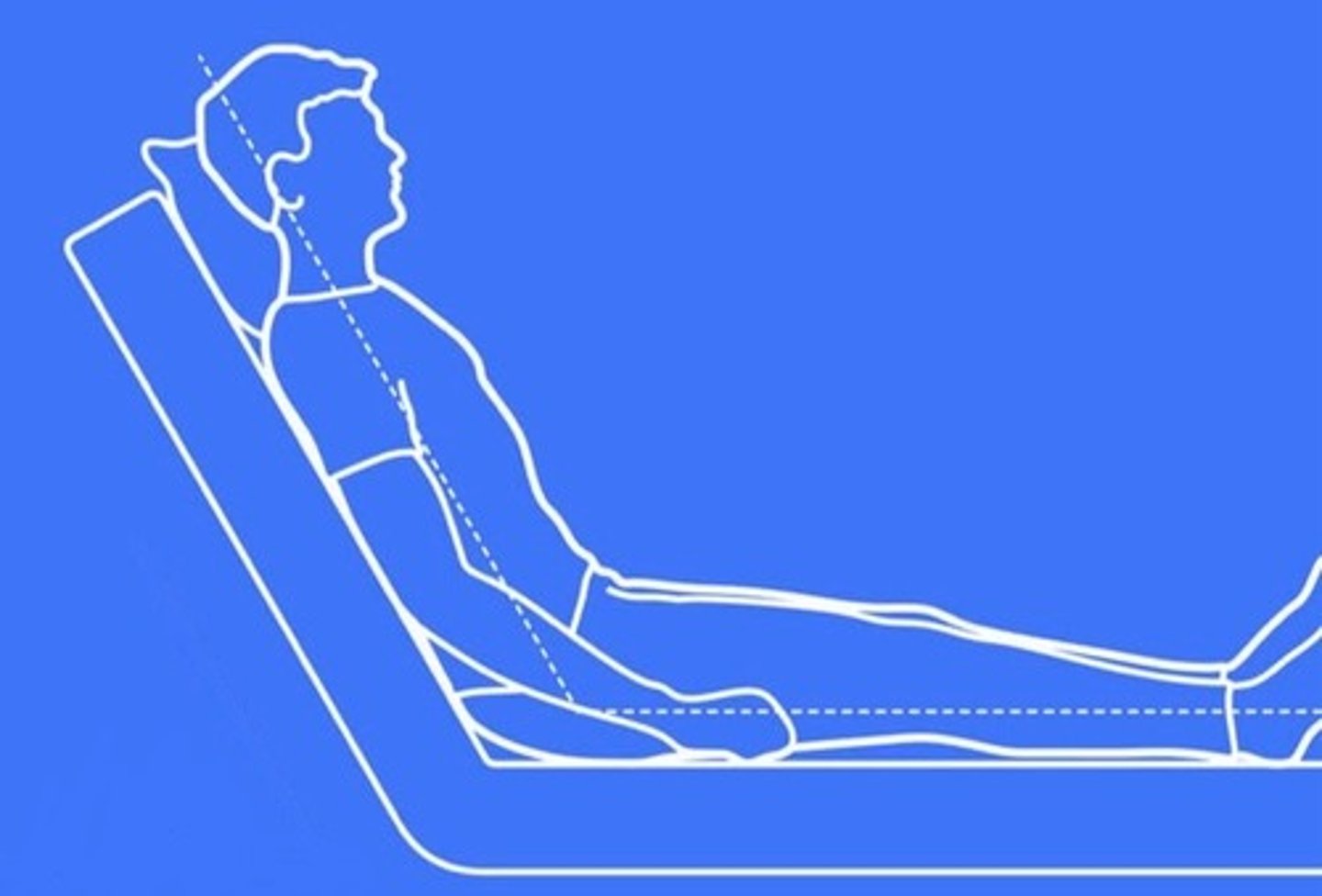
Semi-Fowler's Position
Head and torso is raised between 15 and 45 degrees
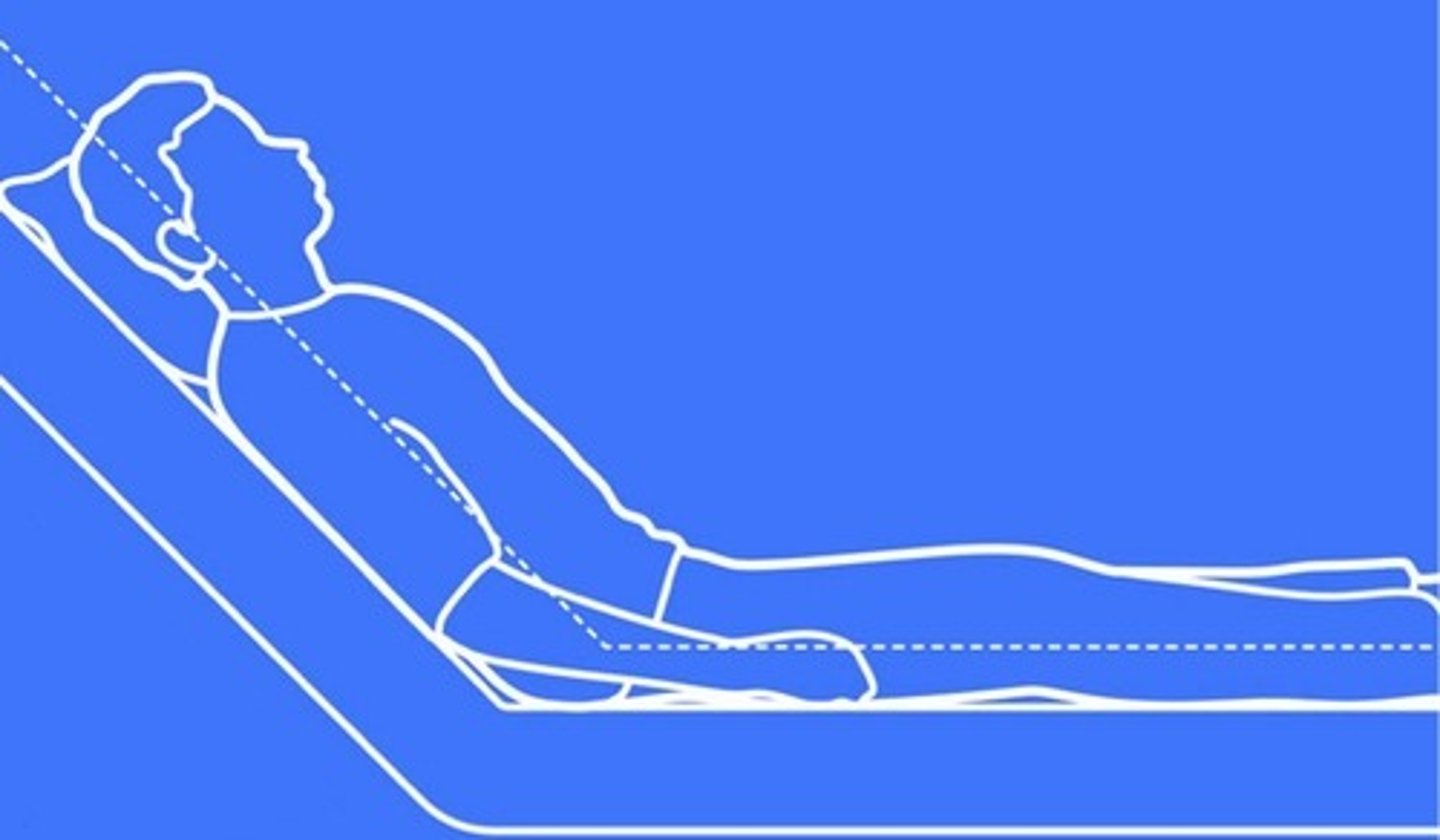
Supine position
The patient is assisted to lie flat on the back with arms at the sides. This position is used to examine the chest, heart, abdomen, and extremities. It is also used to examine the head and neck, as well as in certain neurological reflex tests.

Trendelenburg position
the patient is lying flat on the back, and the entire examination table is tilted with the head of the table down. This position is used for therapeutic treatments, such as postural drainage in patients who have thick respiratory secretions.
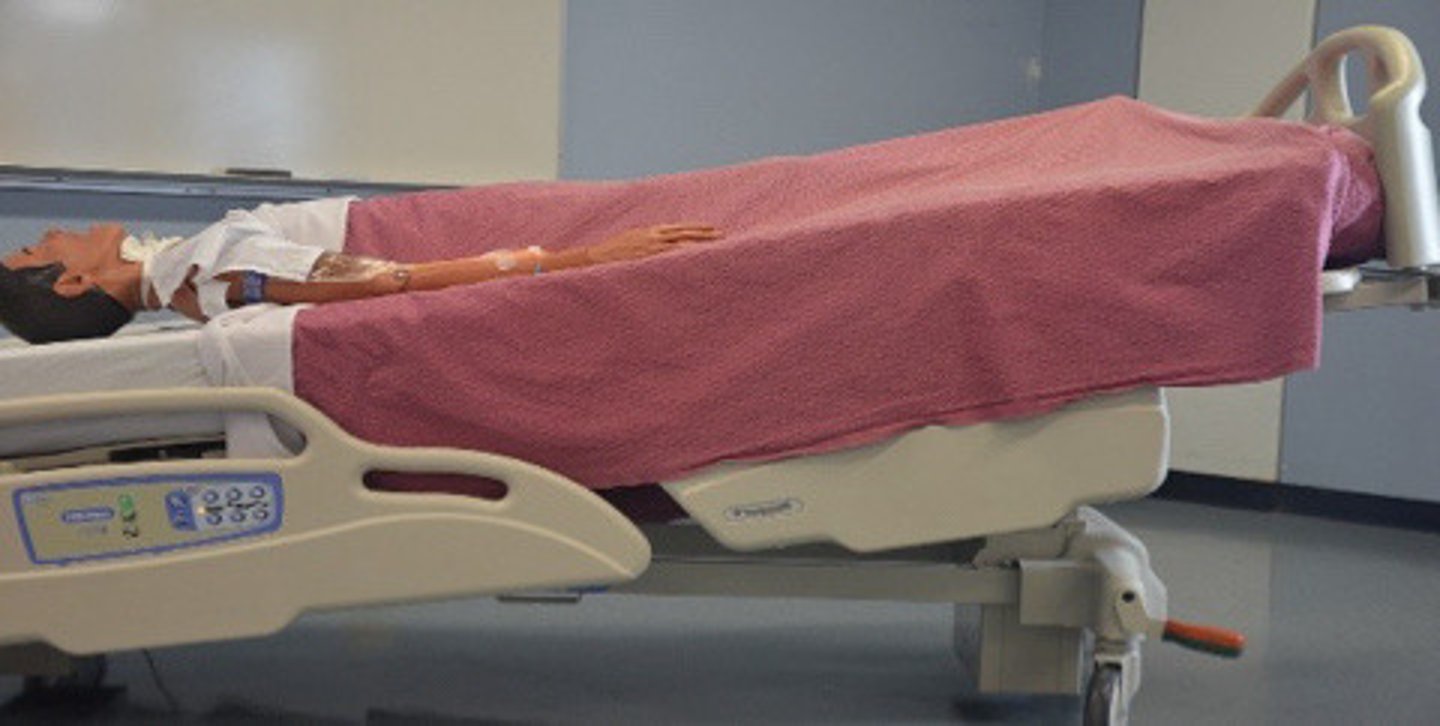
Reverse Trendelenburg's position
The head of the bed is raised and the foot of the bed is lowered
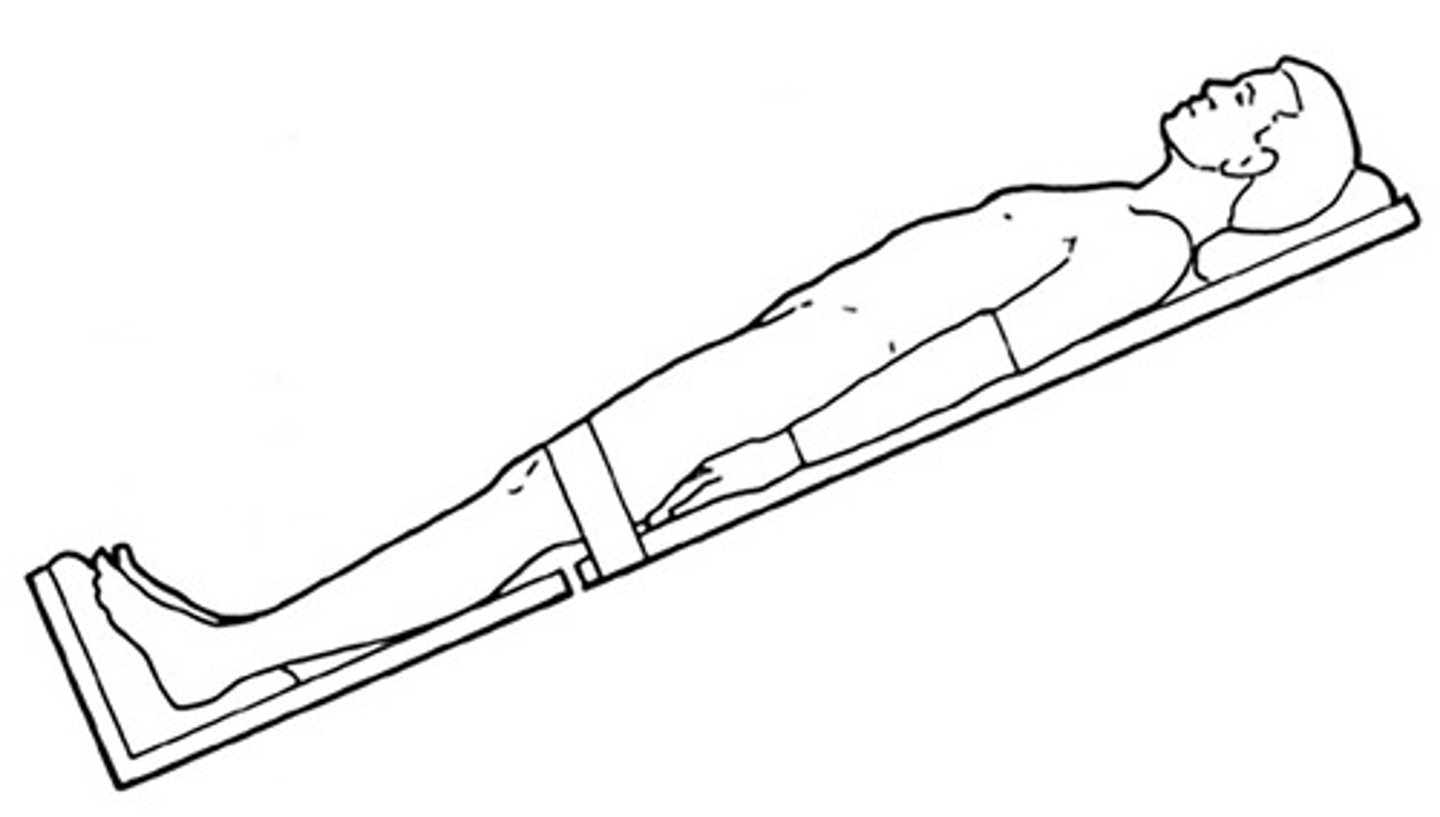
lateral recumbent position
lying on either the left or right side
